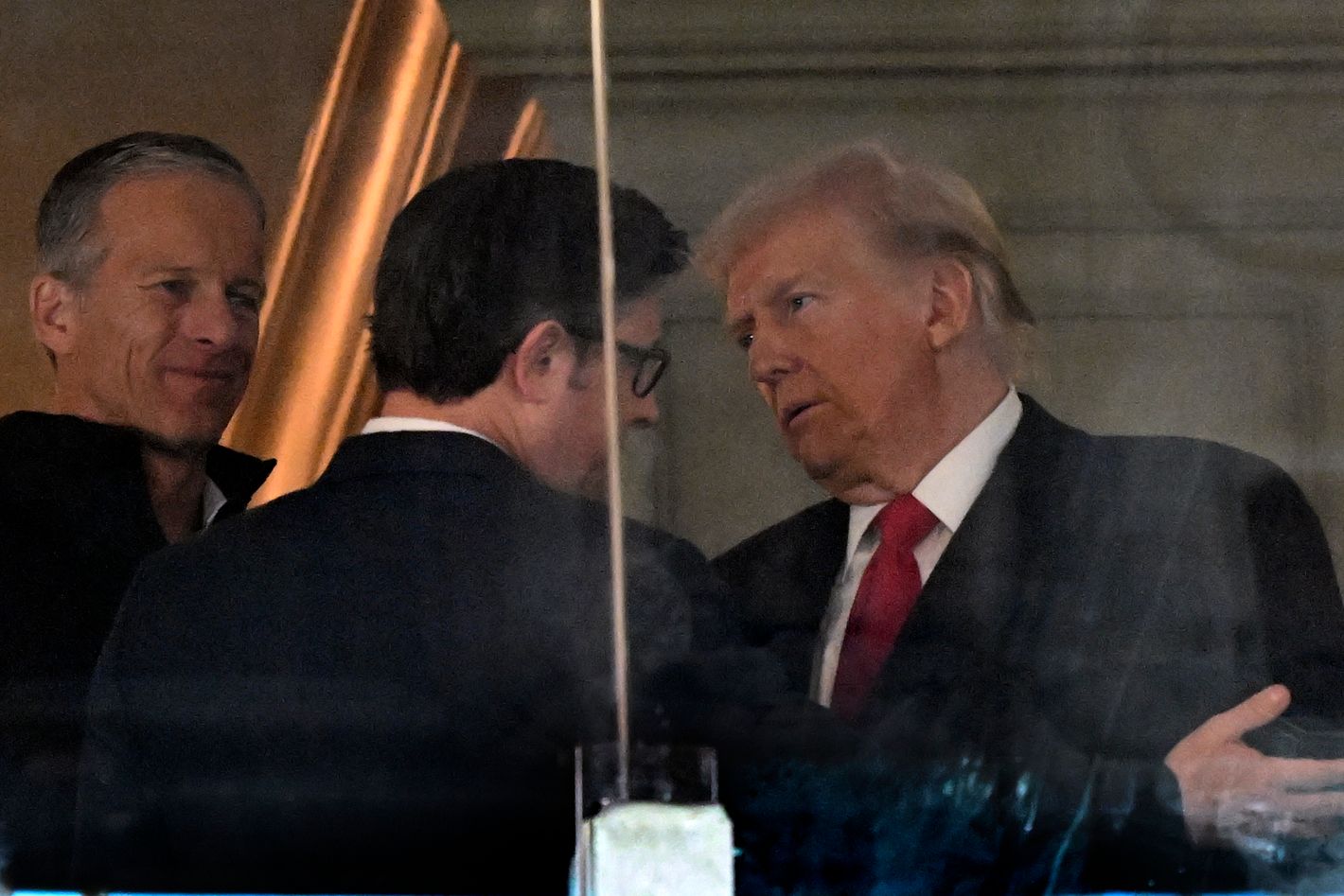Photo: John McDonnell/The Washington Post/Getty Images
Even before Donald Trump’s 2024 election victory, we were being assured — or in some cases warned — that Trump 2.0 would be a lean, mean MAGA machine in sharp contrast to its chaotic predecessor regime. There were an immense number of predictions that the 47th president would “hit the ground running” the very moment he was inaugurated, having gotten a head start with an unusually early roster of major appointments and enjoying total power over a Republican Party in which pre-Trump habits have been hunted to extinction. He claimed a historic mandate to do whatever he wanted, and the only big doubt was whether the revolution he promised in American life and government would be most rapidly promoted by his lapdog Congress or via his own lordly exercises of executive power.
In an interview with Politico, longtime Trump intimate Steve Bannon thought it important to rebrand the transition in order to capture the breathtaking speed with which everything would happen:
“I tell people, ‘shock and awe was a ’17 concept.’ ‘Days of thunder,’ I think are gonna be the concepts starting next Monday,” Bannon said. “And I think these days of thunder starting next week are going to be incredibly, incredibly intense.”
Despite all the hype, as Inauguration Day approaches, there are signs that Trump 2.0 may actually be off schedule in important respects. The only major nominee who is likely to be confirmed by the Senate on Day One is the least controversial, Marco Rubio as secretary of State. Trump’s fantasy of getting the entire Cabinet instantly approved, which appears to have driven his timetable of appointments, is dissipating rapidly. There’s still considerable uncertainty over the scope of initial executive orders and pardons. But most importantly, the administration’s loyal troops in Congress are still in disarray over their basic legislative strategy for implementing the 47th president’s agenda — disarray that extends to many important details.
In 2017, prior to Trump taking the oath of office, congressional Republicans quickly agreed on a two-stage legislative strategy for the year, with one filibuster-proof budget-reconciliation bill being devoted to the repeal of Obamacare and other spending measures and another designed to enact tax cuts. They enacted a budget resolution to set up all this legislation a week before Inauguration Day (Democrats did the same prior to Joe Biden’s inauguration in 2021). But House Speaker Mike Johnson and Senate Majority Leader John Thune have yet to agree on the most basic blueprint for 2025: the number and scope of budget-reconciliation bills, which in turn will determine how rapidly they can move to implement the Trump agenda, as Politico reports:
Under the best-case scenario laid out by Johnson this week, it will be late February before Republicans find themselves similarly situated this time — and even then, the one-bill-versus-two-bill question might not be settled.
The inability to answer central strategic questions now foreshadows much bigger problems ahead.
Even if Johnson bends the knee and agrees to a two-bill strategy enabling an initial budget-reconciliation bill on border security and energy as Thune prefers, it won’t come with the speed that made this strategy compelling to senators in the first place (it appears, for example, that the administration won’t have the money to really get mass deportation rolling immediately, as they wished). And despite the pleas from both chambers that Trump resolve the strategic deadlock between House and Senate, the president-elect has refused to play referee, all but saying out loud that it’s not his job. Beyond the one-bill/two-bill dispute, GOP members of Congress are quietly begging Trump to delete items from his executive-order blitz that they might need legislatively to generate budget savings to pay for border spending and tax cuts. There’s zero clarity about how Elon Musk’s DOGE will enter into the equation, beyond the scary recognition that he commands a gigantic troll army that will order Republicans in Congress to massively cut spending wherever and whenever he and his unpaid tech bros suggest. And there’s no consensus at all as to how Congress will satisfy Trump’s demand for a debt-limit increase, which most Republicans hate like sin itself.
Perhaps the administration’s and Congress’s plans will all come together even as the new president appraises the crowd size at his second inaugural event, but it’s increasingly clear that all the MAGA cackling over the incredible efficiency and harmony underlying Trump 2.0 has been grossly premature. The problems may simply reflect the stubborn resilience of objective reality: It’s really not very easy to remake American government while cutting taxes and deporting millions of immigrants and somehow not denying Americans the benefits and services they want and think they deserve. You can’t “hit the ground running” unless you have a clear idea of where you are going, a realistic sense of feasible outcomes, and a strategy for keeping 77 million Trump voters onboard despite their sometimes hallucinatory expectations that he’ll lower grocery prices while ushering in world peace. There’s no time like the present for the 47th president and his functionaries and allies to take a breath and get a grip.

